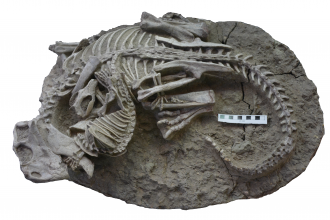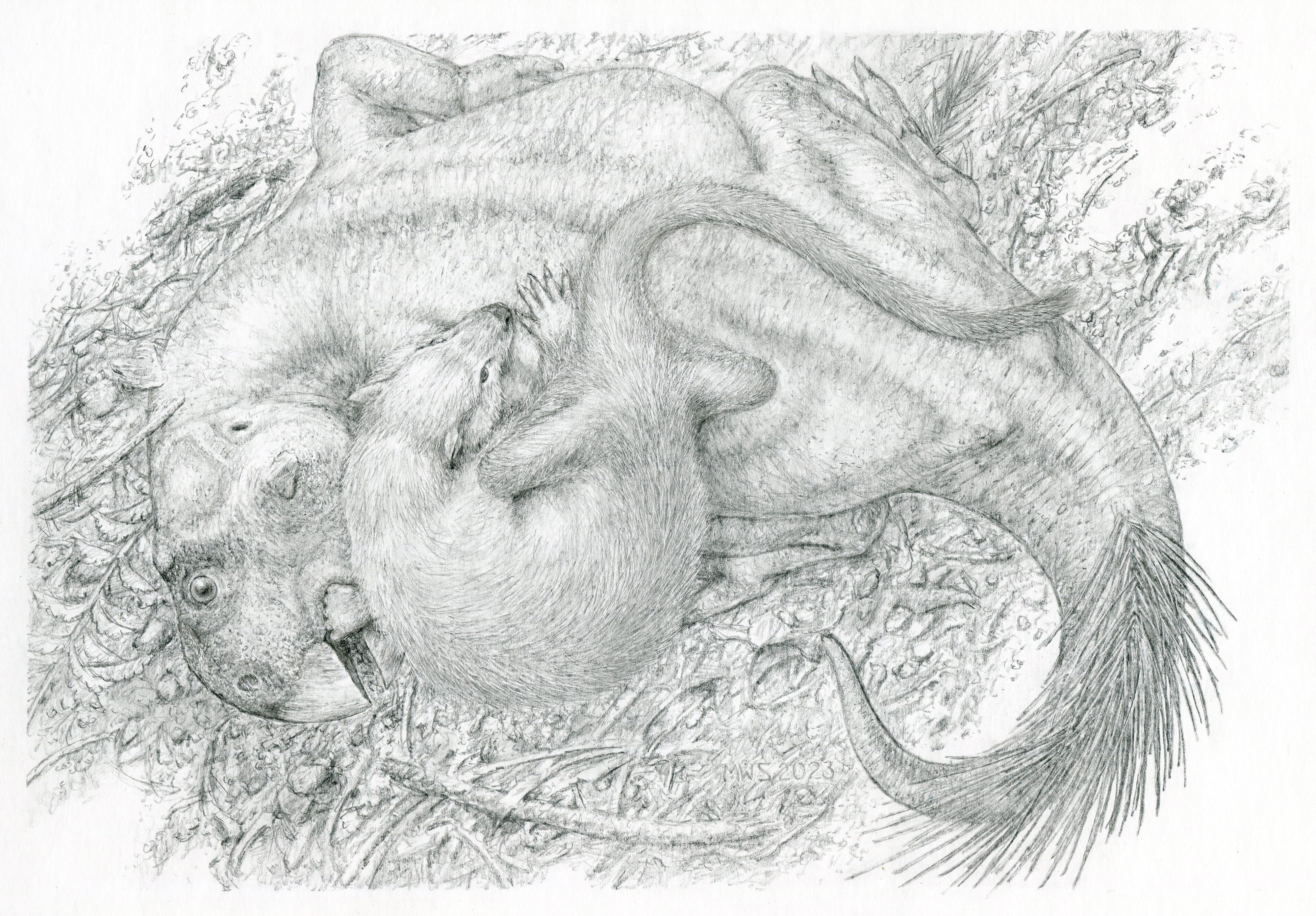Media release
From:
Palaeontology: Dinosaurs were dinner for small Cretaceous mammals *IMAGES*
Small mammals that lived during the Cretaceous may have preyed on dinosaurs considerably larger than themselves, suggests an unusual fossil in China which appears to preserve a small mammal called Repenomamus robustus in the process of attacking the bipedal, beaked dinosaur, Psittacosaurus lujiatunensis. The finding, reported in Scientific Reports, suggests that mammals could pose a threat to some dinosaur species and challenges the assumption that they were simply preyed upon by larger dinosaurs.
Jordan Mallon and colleagues present the fossils of the ancient mammal R. robustus and dinosaur P. lujiatunensis entangled with one another, which were found in the Lujiatun Member of the Lower Cretaceous Yixian Formation in China in May 2012. The specimens date from approximately 125 million years ago. The R. robustus specimen is almost complete — bar the tip of its tail — and measures 46.7 centimetres in length. P. lujiatunensis’ complete skeleton measures 119.6 centimetres in length. Both animals are thought to have been subadults at the time of death.
The dinosaur is lying prone on its front with its hindlimbs folded on either side of its body and its neck and tail curled to the left. The mammal lies on top of the dinosaur’s left side and curves to the right. The mammal’s left paw is gripping the lower jaw of the dinosaur, which has been slightly displaced forward. The mammal’s left hindleg is trapped under the dinosaur’s folded left leg with its hind paw gripping the left shin. R. robustus’ teeth were embedded in P. lujiatunensis’ ribcage when the animals died.
The authors hypothesise that R. robustus was attempting to prey on P. lujiatunensis when both animals were caught in a volcanic mudflow and buried. The extent of their entanglement and lack of other bite marks on the dinosaur’s skeleton indicates that R. robustus was not scavenging on P. lujiatunensis carcass.
Given the extent of ancient volcanic activity in the region, the authors speculate that the Lujiatun Member could become an important source of fossils and provide further insights into the Cretaceous ecosystem.
Multimedia




 International
International



